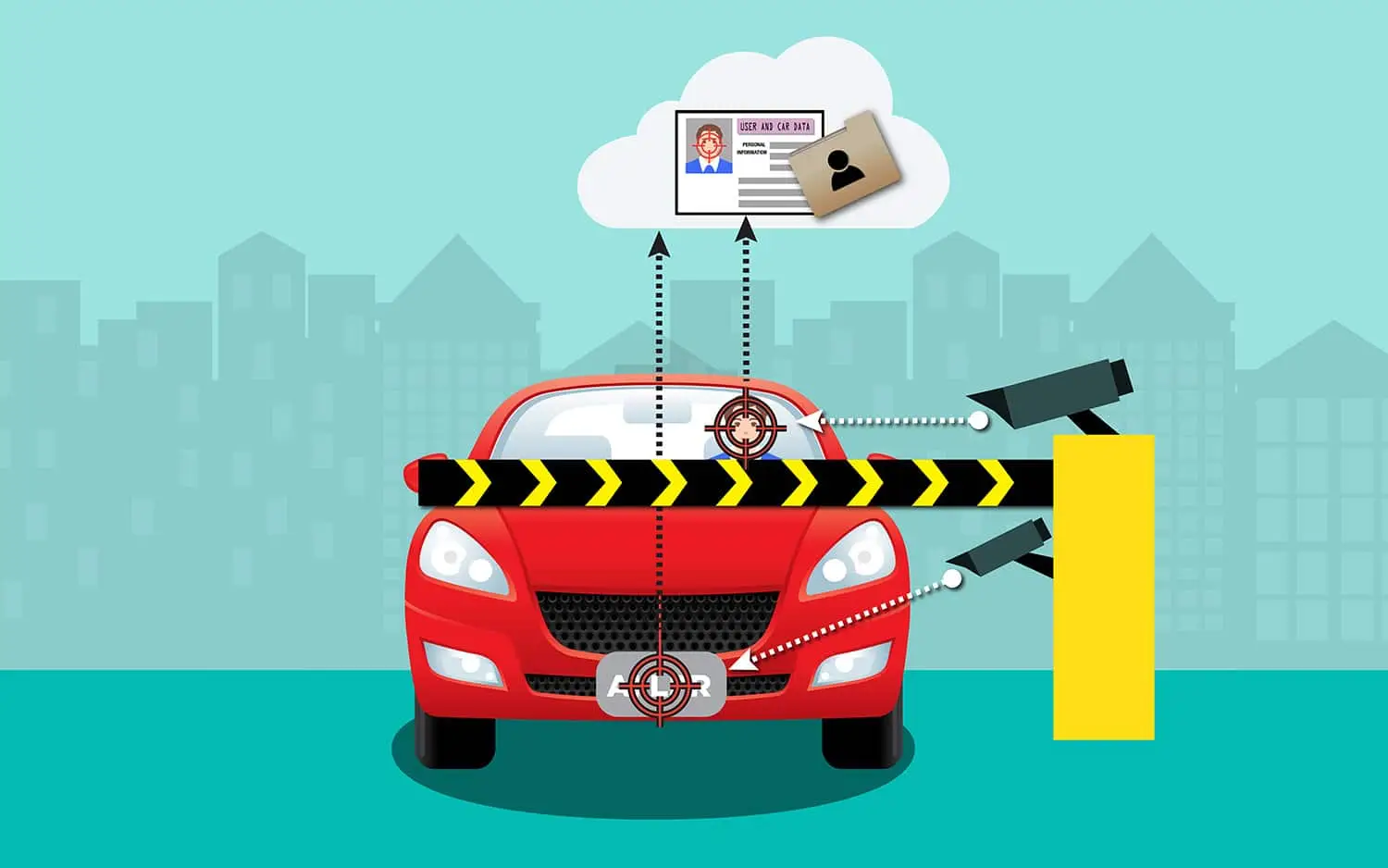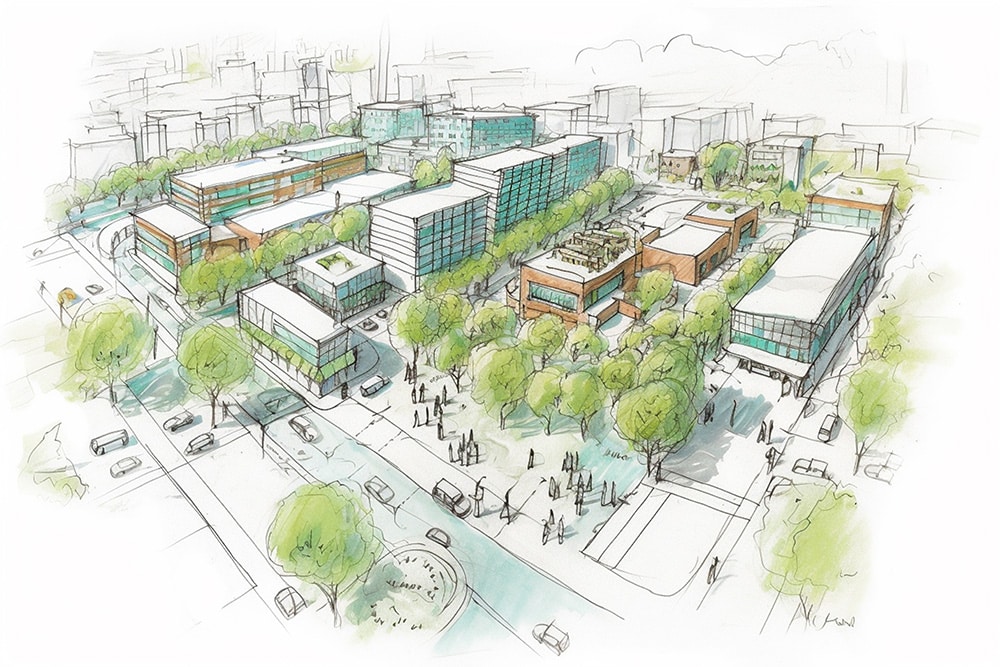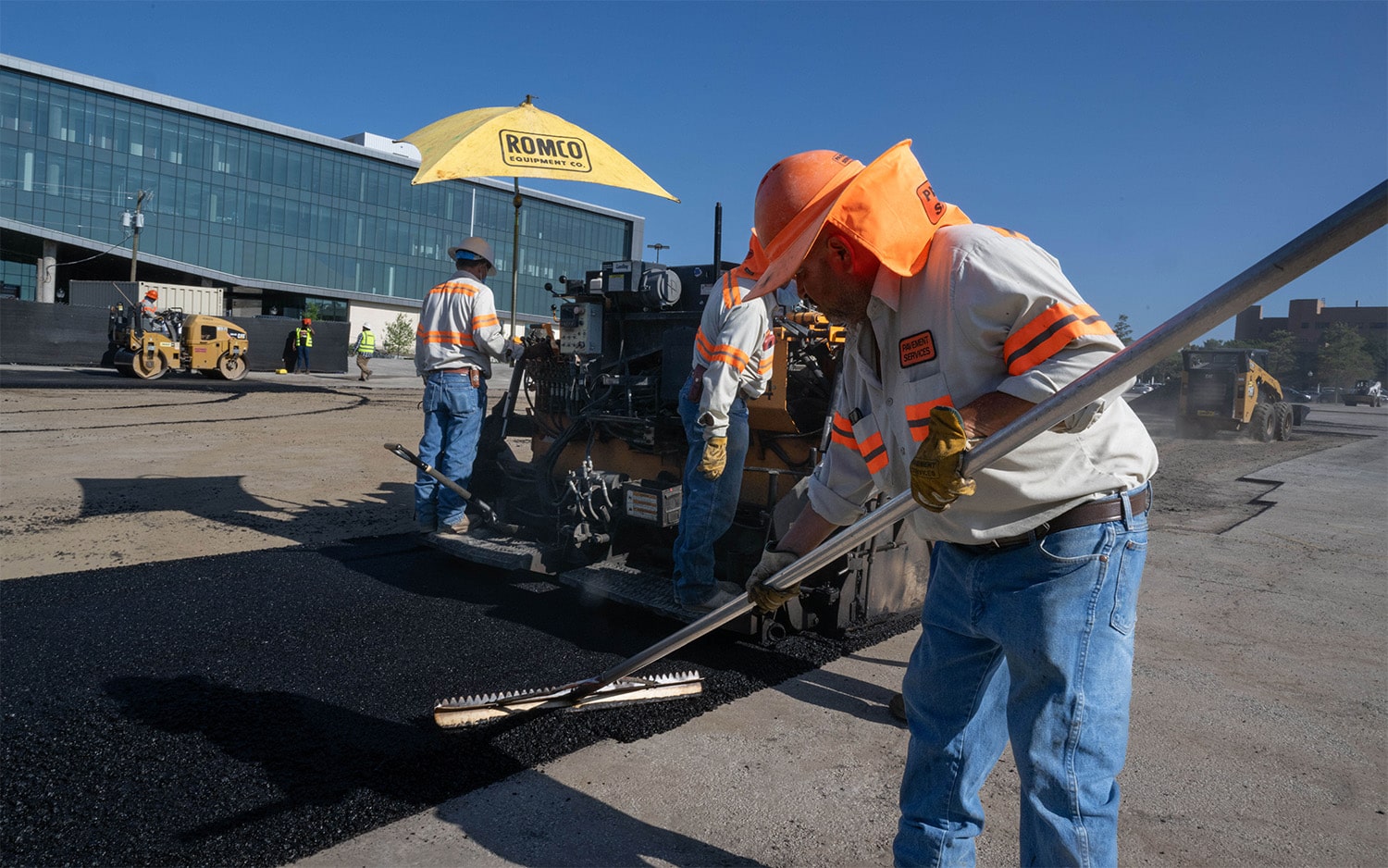
Share:
Share:
Share:
Share:
Share:
The future of parking in dense urban cores is undergoing a transformative shift, moving away from traditional models to more innovative strategies. Technology, while important, is not the primary driver. Instead, the true revolution is happening in how we think about parking and how we focus on connecting parking to larger community goals.
Parking is no longer a siloed industry, with the construction of single-use garages or open lots not anchored and integrated into the larger community. It’s also not a basement afterthought, with designs driven by minimum space requirements demanded by outmoded bureaucratic regulations.
Thankfully, parking minimums are starting to go away, giving way to parking maximums in some instances. At the same time, developers and architects are slowly realizing that the success of their projects begins with a firm understanding of how the public will access their buildings. It is not just that parking is the first and last impression most users will have of a real estate project, but that the architecture must first acknowledge the functionality of the parking before moving on to more creative aspects of the project.
Emphasis is now on comprehensive master planning, integrating parking solutions seamlessly into the broader urban landscape. This holistic approach prioritizes sustainability, efficiency, and adaptability, ensuring that urban parking is carefully interlaced with other forms of transportation to meet the evolving needs of modern cities.
A Master Plan is a dynamic long-term planning document that provides a comprehensive framework for a community’s future growth and development. It encompasses land use planning, infrastructure planning, design guidelines, environmental sustainability, community amenities, and economic growth strategies. The plan serves as a roadmap for policy decisions, development approvals, and investment priorities over a specified period, typically spanning several years or even decades.
Crafting a master plan for a new community or rejuvenating an existing one is an intricate, multi-dimensional process requiring a team of varied professionals to collaborate toward a shared vision. The parking professional is a critical member in this process, which involves the active participation of urban planners, architects, designers, engineers, environmental and social advocates, elected officials, business owners, developers, transportation professionals, regulatory agencies, and community members, each contributing their unique expertise and insights to shape the future of the community.
Incorporating a “park-once” strategy reduces the total need for parking and fosters a community that is more conducive to walking and connectivity. Additionally, by integrating a multimodal approach, it’s possible to substantially lower the demand for parking while encouraging environmentally friendly transportation options. Placing parking at the entry points to a neighborhood and encouraging people to get out of their cars to move about via walking, scooting, biking, bus, tunnel, pedestrian bridge, or tram can change the streetscape in substantial and dramatic ways.
The contemporary approach to designing parking structures extends beyond basic functionality, aiming to integrate them into the community and environment. Newer structures are multipurpose spaces, often housing retail stores, cafes, green spaces, or art installations, becoming vibrant community centers. Aesthetic appeal is a necessary priority, with innovative architectural designs and attractive materials improving the area’s visual allure. Incorporating eco-friendly features like solar panels, green roofs, and electric vehicle charging stations supports wider sustainability efforts, further benefiting the community. Their design harmonizes with the urban landscape and nearby public areas, creating a seamless blend with the community.
Modern parking buildings can also serve as venues for community events, markets, or cultural activities, especially when features like rooftop gardens or open-air theaters are included. This contemporary approach transforms parking buildings into active, appealing, and essential components of the urban setting, significantly contributing to the community’s quality of life and environmental goals.
The focus of modern parking facilities has shifted from just parking to forming an integrated ecosystem that supports various modes of transportation, including walking, cycling, autonomous taxis, delivery truck zones, and even activities like skating or pickleball. This blended approach within parking designs encourages sustainable mobility and helps to decrease traffic congestion and air pollution. Providing amenities like bicycle parking, electric vehicle charging stations, and carpool spaces encourages the use of alternative transport methods, reducing the need for traditional parking spaces, making better use of space, and supporting environmental sustainability and community well-being. Utilizing real-time data analytics can improve traffic flow, lessen congestion, and improve commuter experiences. Additionally, incorporating digital technology, renewable energy, and innovative transportation solutions can bolster the parking industry’s role as a valued and appreciated service.
The concept of multimodal design has empowered the creation of accessible cities that address the needs of diverse user groups. By integrating various transportation modes and promoting pedestrian-friendly environments, parking facilities contribute to the development of inclusive urban spaces that cater to the needs of all community members, regardless of age, ability, or physical limitations.
The multimodal approach also includes designing products that seamlessly integrate the different modes of transportation and, in some cases, fill gaps between major transportation services. This approach involves designing systems that go well beyond linking disparate PARCS systems by focusing on integrating different modes of transportation, such as cars, buses, trains, scooters, bicycles, car-share, bike-share, and even boat services, into a holistic transportation system easily accessible by web and mobile apps. Our challenge as parking professionals is to design products and systems that accommodate different modes of transportation into a cohesive whole.
To illustrate the innovative approach to parking and urban planning, consider the transformation of Israels Plads in Copenhagen. This project, executed by the Scandinavian design firm Cobe, turned a once lifeless parking lot into a dynamic, 12,500 m2 public space, with parking for 1,100 cars now available underground. This area, once merely for parking, now thrives with varied activities like a schoolyard, basketball court, and dining area, all while handling stormwater management. This example underscores the potential of integrated, multifunctional urban spaces that prioritize community engagement and sustainability, aligning perfectly with the principles discussed in your article. More on this can be explored at the Cobe’s project page.
As we move into the future, a multifaceted approach to parking and mobility optimization will help enhance the overall urban experience and contribute to the long-term sustainability and resilience of urban ecosystems. Integrating digital technology, renewable energy sources, and innovative transport solutions is revolutionizing the parking industry, optimizing space utilization, promoting sustainability, and enhancing the commuter experience. The change is happening subtly and quickly, making it hard to fully comprehend the opportunity to help transform our communities for the better. But, if we take a step back to reevaluate and prioritize integrating diverse transportation options and promote inclusive urban mobility thinking, parking facilities can play a pivotal role in creating vibrant, accessible, and environmentally conscious cities. ◆
| February 3rd, 2022, through February 2nd, 20232 | ||||||
|---|---|---|---|---|---|---|
| EV-1 | EV-2 | EV-3 | EV-4 | Total | Description | |
| Odometer Sum (mi) | 14,701 | 3,854 | 14,608 | 12,954 | 46,117 | Sum of odometer |
| Charging Port Energy (kWh) | 40,886 | 14,547 | 40,009 | 39,834 | 135,276 | Charging energy measured at the Combined Charging System (Combined Charging System) port |
| Net Charging Energy (kWh) | 34,832 | 11,627 | 34,482 | 32,726 | 113,667 | Charging energy measured at the batteries |
| Cumulative Energy Consumption (kWh/mi) | 2.37 | 3.01 | 2.37 | 2.53 | 2.47 | Cumulative energy consumption rate when not plugged into a CCS port |
| Cumulative MPGe | 15.7 | 12.4 | 15.8 | 14.8 | 15.1 | Cumulative B20 diesel equivalent fuel economy when not plugged into a CCS port based on 37.037 kWh per diesel gallon |
*EV2 was out of service for repairs due to an accident in February 2022
Andrew Sachs, CAPP, is the President of Gateway Parking Services and a member of IPMI’s Technology Committee.


The AI-Powered Evolution of Parking

Elements for maximizing parking facility revenue

Propark Mobility Promotes Ben Johanning to Senior Vice President
Hartford,

From Architect Dreams to Parking Realities: A Leader’s Journey in



The June issue of Parking & Mobility focuses on parking
Parking & Mobility is IPMI’s flagship publication, covering the news, trends, analysis, technologies, and people of the parking and mobility industry, and how it affects and influences communities around the world.
| Cookie | Duration | Description |
|---|---|---|
| cookielawinfo-checkbox-advertisement | 1 year | Set by the GDPR Cookie Consent plugin, this cookie is used to record the user consent for the cookies in the "Advertisement" category . |
| cookielawinfo-checkbox-analytics | 11 months | This cookie is set by GDPR Cookie Consent plugin. The cookie is used to store the user consent for the cookies in the category "Analytics". |
| cookielawinfo-checkbox-functional | 11 months | The cookie is set by GDPR cookie consent to record the user consent for the cookies in the category "Functional". |
| cookielawinfo-checkbox-necessary | 11 months | This cookie is set by GDPR Cookie Consent plugin. The cookies is used to store the user consent for the cookies in the category "Necessary". |
| cookielawinfo-checkbox-others | 11 months | This cookie is set by GDPR Cookie Consent plugin. The cookie is used to store the user consent for the cookies in the category "Other. |
| cookielawinfo-checkbox-performance | 11 months | This cookie is set by GDPR Cookie Consent plugin. The cookie is used to store the user consent for the cookies in the category "Performance". |
| CookieLawInfoConsent | 1 year | Records the default button state of the corresponding category & the status of CCPA. It works only in coordination with the primary cookie. |
| elementor | never | This cookie is used by the website's WordPress theme. It allows the website owner to implement or change the website's content in real-time. |
| viewed_cookie_policy | 11 months | The cookie is set by the GDPR Cookie Consent plugin and is used to store whether or not user has consented to the use of cookies. It does not store any personal data. |
| Cookie | Duration | Description |
|---|---|---|
| _ga | 2 years | The _ga cookie, installed by Google Analytics, calculates visitor, session and campaign data and also keeps track of site usage for the site's analytics report. The cookie stores information anonymously and assigns a randomly generated number to recognize unique visitors. |
| _ga_02PMHW8YWC | 2 years | This cookie is installed by Google Analytics. |
| _ga_LC0QJJHM3J | 2 years | This cookie is installed by Google Analytics. |
| _ga_V9KYTSBYT2 | 2 years | This cookie is installed by Google Analytics. |
| iutk | 5 months 27 days | This cookie is used by Issuu analytic system to gather information regarding visitor activity on Issuu products. |
| Cookie | Duration | Description |
|---|---|---|
| mc | 1 year 1 month | Quantserve sets the mc cookie to anonymously track user behaviour on the website. |
| Cookie | Duration | Description |
|---|---|---|
| ultp_view_1052 | 1 day | No description |
| ultp_view_1058 | 1 day | No description |
| ultp_view_1060 | 1 day | No description |
| ultp_view_1064 | 1 day | No description |
| ultp_view_1068 | 1 day | No description |
| ultp_view_1070 | 1 day | No description |
| ultp_view_1072 | 1 day | No description |
| ultp_view_1078 | 1 day | No description |
| ultp_view_1082 | 1 day | No description |
| ultp_view_1088 | 1 day | No description |
| ultp_view_1100 | 1 day | No description |
| ultp_view_1103 | 1 day | No description |
| ultp_view_1114 | 1 day | No description |
| ultp_view_1118 | 1 day | No description |
| ultp_view_1122 | 1 day | No description |
| ultp_view_1125 | 1 day | No description |
| ultp_view_1130 | 1 day | No description |
| ultp_view_1132 | 1 day | No description |
| ultp_view_1135 | 1 day | No description |
| ultp_view_1541 | 1 day | No description |
| ultp_view_1554 | 1 day | No description |
| ultp_view_1557 | 1 day | No description |
| ultp_view_1560 | 1 day | No description |
| ultp_view_1563 | 1 day | No description |
| ultp_view_1568 | 1 day | No description |
| ultp_view_1572 | 1 day | No description |
| ultp_view_1576 | 1 day | No description |
| ultp_view_1580 | 1 day | No description |
| ultp_view_2305 | 1 day | No description |
| ultp_view_2321 | 1 day | No description |
| ultp_view_2338 | 1 day | No description |
| ultp_view_2342 | 1 day | No description |
| ultp_view_259 | 1 day | No description |
| ultp_view_270 | 1 day | No description |
| ultp_view_275 | 1 day | No description |
| ultp_view_286 | 1 day | No description |
| ultp_view_3074 | 1 day | No description |
| ultp_view_3115 | 1 day | No description |
| ultp_view_3334 | 1 day | No description |
| ultp_view_3336 | 1 day | No description |
| ultp_view_3338 | 1 day | No description |
| ultp_view_3340 | 1 day | No description |
| ultp_view_3346 | 1 day | No description |
| ultp_view_3354 | 1 day | No description |
| ultp_view_3361 | 1 day | No description |
| ultp_view_3367 | 1 day | No description |
| ultp_view_365 | 1 day | No description |
| ultp_view_367 | 1 day | No description |
| ultp_view_38 | 1 day | No description |
| ultp_view_3846 | 1 day | No description |